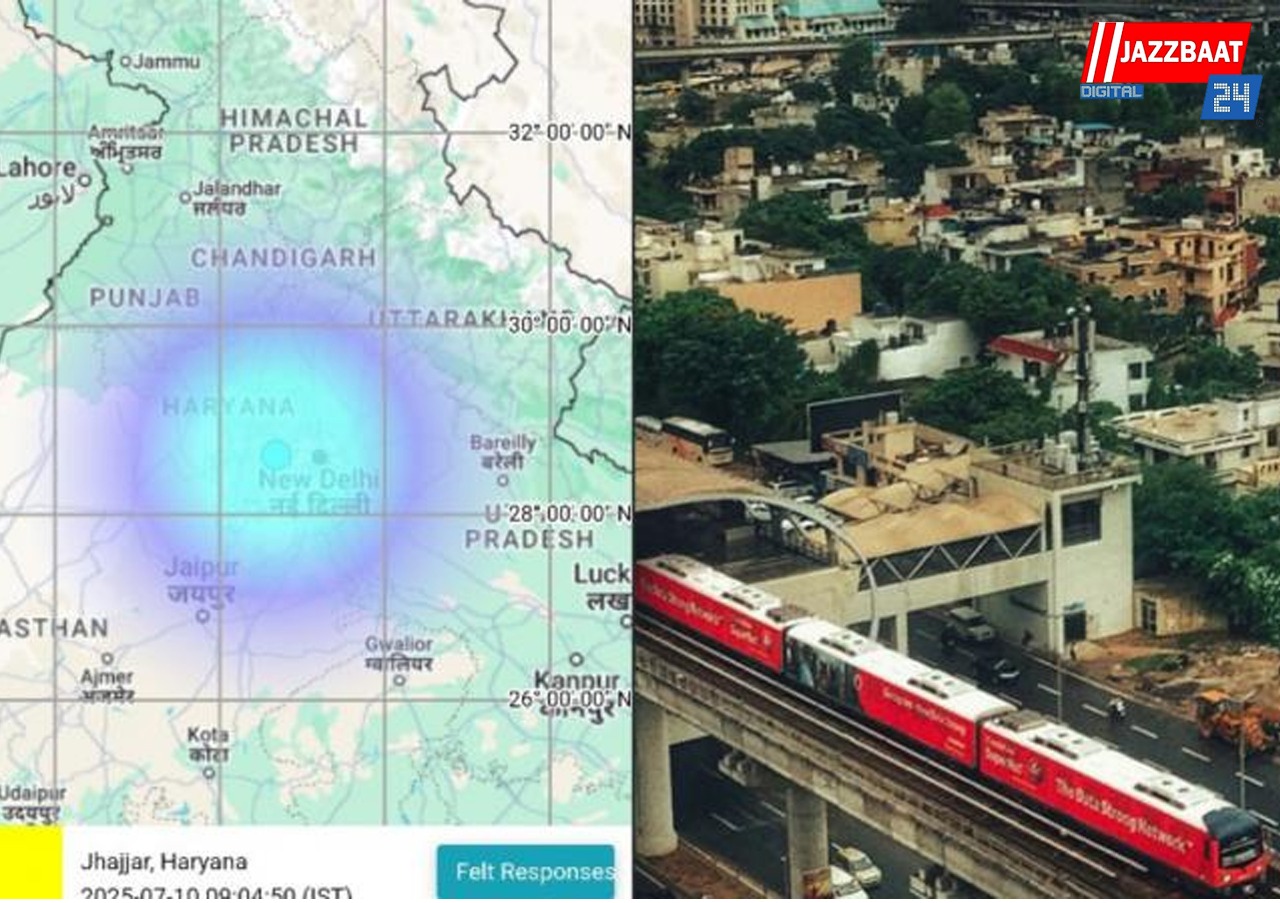
NEW DELHI:
The National Centre for Seismology (NCS) confirmed that a 3.7 magnitude earthquake struck Jhajjar district in Haryana on 11 July, sending mild tremors across the Delhi–NCR region. This was the second earthquake in just two days, following a stronger 4.4 magnitude tremor recorded on 10 July. No casualties or structural damage have been reported in either event.
The NCS reported that the epicentre of the 3.7 magnitude earthquake was in Jhajjar, with the tremor depth consistent with the previous day’s incident. Residents across Delhi, Noida, Gurugram and surrounding areas felt the earth shake briefly, with some people rushing outside. “It shook my bed and windows,” said one Delhi resident, echoing earlier accounts after Thursday’s tremor.
The 10 July tremor measured 4.4 on the Richter scale and originated around 10 km below the surface, according to NCS data. Local villages such as Girawar, closer to the epicentre, reported strong jolts, though no structural harm was recorded. “It didn’t leave cracks in the walls, but many stories to tell,” said a resident over tea.
Delhi’s placement within seismic zone IV characterised by high earthquake risk, explains the sensitivity of the region. The earthquake activity aligns with historical patterns: between 1993 and 2025, some 446 tremors of varying magnitudes were recorded near Dhaula Kuan alone. Experts have identified active fault lines under areas like Sohna, Mathura and Moradabad.
Despite its frequency, seismic alerts in the region remain rare at higher magnitudes. Authorities attribute these earthquakes to natural tectonic movements, unrelated to industrial activities such as groundwater extraction or mining.
Following both earthquakes, officials have confirmed no damage or injuries. However, the back to back nature of the tremors has prompted calls for vigilance. The Delhi Disaster Management Authority urged citizens to report any signs of structural weakness and to stay calm during such events.
Scientists have indicated that while two moderate earthquakes in quick succession do not always signal a major earthquake, monitoring will continue. The NCS is expected to issue updates on potential aftershocks.
Urban planners and engineers are expected to use this incident to re-evaluate building standards across the NCR, given the high density of older structures. Experts emphasise that regular safety audits, especially in seismically vulnerable zones, are now more critical than ever.
In response to public concern, Seismologist Dr Priya Agarwal of Punjab University stated, “Such tremors remind us that the northern plains are not immune to tectonic shifts. Preparedness and patience is the appropriate response.”
As the region adjusts to the reality of recurrent seismic activity, the focus remains on public safety, structural resilience and improved monitoring systems. The recurrence of twin earthquakes in under 48 hours may have been unexpected, but authorities remain committed to providing timely information to protect lives and property.